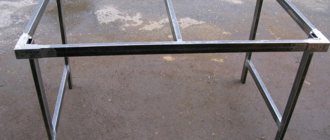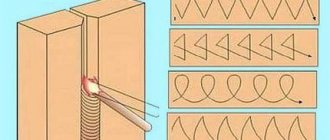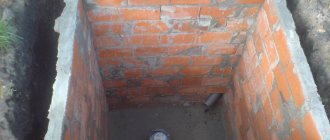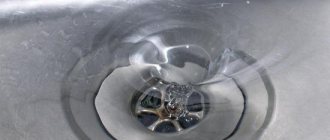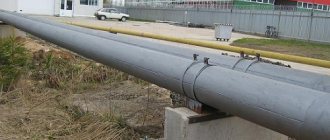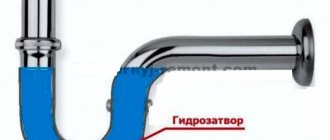Gate valves and butterfly valves are the most common types of industrial pipeline fittings. At the same time, they have a number of design differences from each other, which directly determine their advantages and disadvantages, areas and conditions of application.
The main working element of the valve is a disk located perpendicular to the flow of the medium
. It is rigidly fixed on an axis, which in this case acts as a rod, that is, it serves to change the position of the locking element. The fully open position of the valve corresponds to the placement of the disk along the axis of the valve body. When completely closed, it is adjacent to the saddle along the entire perimeter, thereby blocking the cross-section. Thus, to completely close or open the valve, it is enough to turn the rod 90 degrees.
The main working body of the valve - gate, wedge or disk - moves perpendicular to the flow of the medium between parallel sealing surfaces. In this case, in the fully open position, it is located outside the passage opening. The locking element is moved by rotating a retractable or non-retractable spindle, which can be actuated manually using a steering wheel, including through a gearbox, or automatically using a multi-turn electric drive, hydraulic drive or pneumatic drive.
Advantages and disadvantages of valves and shutters
The main advantages of butterfly valves:
- low hydraulic resistance;
- short opening and closing times;
- simplicity of design, installation and maintenance;
- small construction length and height;
- relatively small dimensions and weight.
The main disadvantages of the valve include the need to apply significant effort to move with high pressure and a large diameter of the pipeline, low tightness in the closed position, increased wear of the locking element, which is constantly located inside the flow, as well as seals, with frequent closing and opening. The first problem is solved by installing gearboxes and drive mechanisms. Increased service life of sealing surfaces and tightness can be achieved by using eccentric valves.
Main advantages of valves:
- minimum hydraulic resistance in the open position;
- sufficiently high tightness;
- small construction length;
- the ability to block the flow of viscous and contaminated media;
- suitable for installation on pipelines with changing flow direction;
- high seismic resistance;
- slight wear of the sealing surfaces even with frequent changes in the position of the locking element.
The main disadvantages of valves are the significant installation height and weight of the valves due to the design features, as well as the low speed of operation, even with the use of actuators. Gate valves are more complex and more expensive than gate valves in terms of installation, maintenance and repair.
Areas of application for valves and valves
Butterfly valves are installed as shut-off (less often shut-off and control) valves on pipelines intended for transporting clean media. They are actively used in heat supply and hot water supply systems in public utilities, in the food industry and other areas where increased requirements for tightness are not imposed. It is advisable to install pipeline fittings of this type on large-diameter pipelines.
Gate valves, unlike gate valves, are less critical to the cleanliness of the environment, pressure and temperature, while at the same time they are able to provide high tightness and are suitable for regulation. They are used in water supply and wastewater systems, oil and chemical industries, when response speed and large equipment sizes are not critical. It is advisable to install them in areas with increased seismic activity.
- Butterfly valves use the most reliable seal that currently exists - elastic, eliminating leaks during operation of the valve, i.e. ensuring tightness in the valve, just like a valve, according to class “A”. However, due to the metal-to-metal seal, the valve has practically no service life, because Any entry of solid fractions into the medium disables it. Repairing valves requires a lot of expense and expensive special equipment. The service life of the valves (taking into account the replacement of the only vulnerable valve insert-disk assembly) is three times higher than the service life of the valves.
- The mentioned unit can be replaced within 15–60 minutes depending on the nominal diameter of the valve and does not require highly qualified performers. And the wear resistance of the rubber used, according to the Rubber Institute, is guaranteed for 5–10 years. Installation of additional seals during installation is not required, because how the sealing of the valve-flange connection occurs due to the elastomeric liner.
- The use of protective coatings based on elastomeric and polymer materials for parts in direct contact with the working environment ensures the resistance of the fittings to aggressive environments. An elastomer or metal-rubber liner eliminates the possibility of contact of the working environment with the valve body, and an elastomer or polymer coating protects the disc.
- A disc valve is favorably distinguished from a gate valve by such indicators as short opening and closing times and the ability to smoothly regulate the flow of the medium. The shutter is opened/closed by simply turning the dial 90°.
- The disc valve has small weight and dimensions. Thus, the weight of one valve is up to 8 times less than the weight of a valve of the same nominal diameter, which reduces the weight load on the pipeline and simplifies installation work, because no powerful lifting equipment or special installation sites are required.
- The butterfly valve does not have threaded working pairs. The threaded pair of bushing-spindle of the valve is subject to corrosion due to exposure to the external environment and fails, especially in wells of heating mains that have a warm and humid environment, as well as when installing valves in open areas. Speaking about wells, it is worth mentioning the possibility of installing butterfly valves in them using columns up to 2.5 m long, assembled from sections of 0.5 m each.
- In the flow part, a disc valve, unlike a gate valve, has no stagnant zones. In stagnant zones, various mechanical impurities present in the flowing medium accumulate, as a result of which there comes a moment when the valve cannot be closed and, moreover, ensure a hermetically sealed shutoff of the flow.
- Unlike a gate valve, a disc valve is convenient for installation on pipelines that have thermal insulation. The outer diameter of the valve body does not exceed the outer diameter of the pipeline flange, and the valve controls are located above the overall size of the thermal insulation.
- For a disc shutter, any automation is possible. It can be controlled either by manual means - a handle or gearbox, or by a pneumatic or electric drive of domestic or Western production.
The difference between butterfly valves and gate valves is that the medium does not stagnate in their bodies even when the system is stopped for a long time. At the same time, butterfly valves are many times smaller in size and weight and can be installed in any position.
Due to the high chemical and wear resistance of the materials, the scope of application of butterfly valves in working media is quite wide: in addition to domestic and industrial water, it is also sea water and saturated steam, chemically active media (acidic and alkaline), petroleum products, transformer oil, natural gas, food and biological media, bulk materials, hydraulic and pneumatic pulps with particle size up to 2 mm.
If we compare a gate valve and a butterfly valve, it should be noted that a butterfly valve, unlike a gate valve, is characterized by smoother regulation of the flow of the working medium and less time spent on closing and opening. At the same time, the valves cannot boast a high level of control accuracy. To open or close the shutter, you simply need to turn the dial 90 degrees. As an element of shut-off valves, the valve can have several fixed positions.
When choosing a disk valve, you should first of all focus on such characteristics as the flow of the working medium that fits into the rotation of the working disk. In this case, the rotation of the disk can vary from 15 to 75 degrees. It is this range that makes it possible to ensure the most proportional consumption of the working medium, which does not harm the valve itself.
In addition, it should be noted that the process of regulating the flow of the working medium through a narrow gap leads to cavitation, which destroys the coating and the seat seal of the disk. Leaks can be prevented by using special seals made of elastic material. In addition, such seals take on the function of protecting the body and cover of the shutter. Typically, the service life of a rubber seal is 5-10 years, after which it must be replaced with a new one. The replacement procedure is extremely simple and does not require any special knowledge or experience. If metal is used as a seal, you must remember that the entry of solid fractions into the working environment can easily lead to failure of the entire valve.
Despite the fact that the butterfly valve can be installed in almost any position, with a large valve diameter the stem must be in a horizontal position, otherwise there is an increased risk of jamming due to solid particles entering the stem area. The short installation length and small weight and dimensions, especially in comparison with the same gate valves, are also an advantage of the gate valves. Such qualities ensure ease of installation and reduce the load on the pipeline system.
The absence of threaded working pairs in the valves eliminates the occurrence of corrosion due to exposure to the working environment. In addition, the valves do not have stagnant zones in their flow part, so a long shutdown of the system does not lead to stagnation of the working medium in the valve, which cannot be said about gate valves. As a final note, it is also worth noting that gates can be automated by any means. In addition, they are an excellent option for installation on pipeline systems with thermal insulation, which is ensured by their design features.
Of course, as a result of this comparison, the Gate Valve is an equally high-quality and reliable pipeline part. However, if you find it difficult to choose between a bolt and a bolt, in most cases preference should be given to the bolt. At the same time, valves are very often used in industrial pipeline systems. Moreover, their reliability allows them to be used even in the most dangerous areas of pipeline systems. Some types of valves represent the only possible solution in conditions, for example, of increased seismicity, since they can withstand up to 8 points of seismic activity.
Thus, the choice in any case will depend on the individual requirements of each individual case.
Gate valves and valves in various designs perform a similar function. But they differ noticeably from each other. What are the specifics of the relevant mechanisms?
Features of butterfly valves
Gate valves are used on pipelines as shut-off devices, but they are intended not only to block the movement of the working environment. Butterfly valves are also used for regulation: with their help, you can change the flow of a substance according to need.
Most often, this type of shut-off valves is used for large pipe diameters, in low-pressure environments, as well as with reduced tightness requirements. Let us define the following main advantages of butterfly valves:
- compact dimensions;
- simplicity of design;
- ease of installation and repair.
However, speaking about the advantages of this type of equipment, it would be correct to pay attention to some disadvantages inherent in flanged butterfly valves:
- low tightness;
- installation of a gearbox is often required;
- cleaning is carried out using mechanical devices.
At the moments of choice, it is these properties of the shutters that become the turning point that force the buyer to abandon this device.
Tips for choosing
The choice of shut-off valves for your home should begin with determining the material. Modern valves are made of steel and brass, sometimes with a cast iron body. The working body is always made of steel, most often stainless.
Valves are usually installed at water points where mixing of hot and cold water is not required: in toilets, for connecting tanks, in utility rooms. Sometimes they are installed at the cold or hot water inlet. When installing at the inlet, you should weigh the fact that they significantly reduce the water pressure in the home network. For the water collection point there is such an advantage as the ability to use it as a regulating device for water flow (for a faucet with its operating stroke of 90 ° this is somewhat more difficult to do).
Valves for metal-plastic are extremely rare. Flanged products are also usually not installed on pipelines with a diameter of less than 50 mm. Sometimes they choose products with a fitting connection.
Brass and bronze are good because they do not rust.
By design, valves for home use are usually sleeve type. Almost all valve fittings sold in construction supermarkets differ in price, manufacturer and design. The likelihood of buying a frankly low-quality product is low. But he doesn’t post a check just in case.
In practice, the choice of a home craftsman comes down to the choice of design and price. Good luck with your choice!
Characteristics of wedge gate valves
A flange valve can also serve as a locking mechanism for pipeline systems. The material of manufacture depends on the characteristics and characteristics of the working environment, its pressure and other factors. As a rule, steel or cast iron valves are used, depending on the alloy composition; they can operate at pressures up to 25 MPa and withstand temperatures of more than 500°C.
Such equipment has found wide application at energy facilities, oil pipelines, and water and gas supply systems. In certain situations, there may not even be a choice of closure device: gate valves may be the only option. Due to the fact that they can withstand up to 8 points of seismic activity, they are actively used at sites where earthquakes are possible.
Speaking about the advantages of a cast iron flanged valve, it is necessary to note the following points:
- high tightness;
- long service life;
- work at high pressure and temperature;
- small hydraulic resistance required at high flow rates of the working fluid.
However, among the disadvantages of this type of equipment, the following factors are noted:
- inability to regulate flow;
- long opening/closing time;
- sufficient complexity of repair;
- heavy weight and size of the device.
What to choose: shutter or gate valve?
We have looked at the main points of operation of both types of shut-off valves, covering the most noticeable qualities. If you are going to buy a valve or wedge valve, it is worth remembering that each individual use of the equipment requires individual consideration. The choice should be influenced by numerous factors, largely related to the characteristics of the further operation of the device.
We cannot ignore the fact that recently there has been a popularization of flanged butterfly valves in the construction and industrial sectors. It is difficult to argue that in some respects they are undoubtedly superior to wedge flanged valves. As we noted earlier, their advantages include the speed of opening, as well as the ability to smoothly regulate the flow of the working medium.
Comparing these types of equipment, it is impossible not to note the fact that the valves are characterized by significantly less weight. With the same diameter, the weight and dimensions of the devices will differ several times. The significant weight of the valve has a certain effect on the pipeline, creating additional load. This also complicates the installation and disassembly of the device, which requires lifting equipment.
However, despite this, many enterprises are in no hurry to switch to using shutters. The main reason is the durability of the valve. As a rule, the valve seal is more durable, does not wear out under the influence of temperature, and does not dry out over time and exposure to the working environment.
Gate valves cannot yet be replaced by gate valves from the shut-off valves market for the reason that they guarantee maximum tightness. In addition, butterfly valves cannot be used at all in some types of operating environments, since they can degrade the hydraulic characteristics.
If we compare a gate valve and a butterfly valve, it should be noted that a butterfly valve, unlike a gate valve, is characterized by smoother regulation of the flow of the working medium and less time spent on closing and opening. At the same time, the valves cannot boast a high level of control accuracy. To open or close the shutter, you simply need to turn the dial 90 degrees. As an element of shut-off valves, the valve can have several fixed positions.
When choosing a disk valve, you should first of all focus on such characteristics as the flow of the working medium that fits into the rotation of the working disk. In this case, the rotation of the disk can vary from 15 to 75 degrees. It is this range that makes it possible to ensure the most proportional consumption of the working medium, which does not harm the valve itself.
In addition, it should be noted that the process of regulating the flow of the working medium through a narrow gap leads to cavitation, which destroys the coating and the seat seal of the disk. Leaks can be prevented by using special seals made of elastic material. In addition, such seals take on the function of protecting the body and cover of the shutter. Typically, the service life of a rubber seal is 5-10 years, after which it must be replaced with a new one. The replacement procedure is extremely simple and does not require any special knowledge or experience. If metal is used as a seal, you must remember that the entry of solid fractions into the working environment can easily lead to failure of the entire valve.
Despite the fact that the butterfly valve can be installed in almost any position, with a large valve diameter the stem must be in a horizontal position, otherwise there is an increased risk of jamming due to solid particles entering the stem area. The short installation length and small weight and dimensions, especially in comparison with the same gate valves, are also an advantage of the gate valves. Such qualities ensure ease of installation and reduce the load on the pipeline system.
The absence of threaded working pairs in the valves eliminates the occurrence of corrosion due to exposure to the working environment. In addition, the valves do not have stagnant zones in their flow part, so a long shutdown of the system does not lead to stagnation of the working medium in the valve, which cannot be said about gate valves. As a final note, it is also worth noting that gates can be automated by any means. In addition, they are an excellent option for installation on pipeline systems with thermal insulation, which is ensured by their design features.
Of course, as a result of this comparison, the Gate Valve is an equally high-quality and reliable pipeline part. However, if you find it difficult to choose between a bolt and a bolt, in most cases preference should be given to the bolt. At the same time, valves are very often used in industrial pipeline systems. Moreover, their reliability allows them to be used even in the most dangerous areas of pipeline systems. Some types of valves represent the only possible solution in conditions, for example, of increased seismicity, since they can withstand up to 8 points of seismic activity.
Thus, the choice in any case will depend on the individual requirements of each individual case.
Add site to bookmarks
- Kinds
- Choice
- Installation
- Finishing
- Repair
- Installation
- Device
- Cleaning
The main difference between a valve and a gate valve, analysis of the design features of the design allows you to make the right choice of fittings when installing a pipeline.
conclusions
Check valves are applicable in pipelines of any industries and housing and communal services.
- Installed on horizontal and vertical pipelines.
- They are connected using the following methods: welding, flange and wafer.
- Controlled automatically or manually.
- The design is simple and effective, with a small number of parts.
- They are light in weight and dimensions
In November 2021 Our company took part in the annual congress on petrochemicals and oil refining PRC Russia&CIS. More than 200 representatives from Russia and the CIS gathered in Moscow to discuss pressing issues of industry development. At the thematic exhibition we demonstrated our new design development - a butterfly valve with triple eccentricity APA.3X. Taking into account the needs of the market, our specialists have created a unique…
Valves device
A valve is a fitting device that has a shutter in the form of a disk, sheet or wedge that moves along the sealing rings of the body perpendicular to the axis of the medium flow.
Depending on the design, valves can be straight-through or narrowed, having O-ring openings smaller than the diameter of the pipeline.
Depending on the geometry of the valve, valves are divided into parallel and wedge. Wedge gate valves are equipped with a wedge gate with sealing surfaces that are located at an angle to each other. The shutter wedge can be solid elastic, solid rigid or composite double-disc.
Equipped with valves whose sealing surfaces are parallel to each other. This design can be single-disc (gate) or double-disc.
Gate valves can be equipped with a retractable spindle (stem) or a non-retractable spindle (rotating spindle). They differ in the design of the screw pair, thanks to which the shutter moves. Gate valves with a rotating spindle have a smaller construction size.
Return to contents
Classification
According to the type of locking element, they are distinguished:
- rotary, when under the influence of the flow the barrier rotates on an axis installed perpendicular to it. When a reverse direction of movement occurs, the damper automatically closes. Suitable for gaseous and liquid media of varying degrees of aggressiveness.
- disk (wafer) are a small-sized design. During installation, fixation occurs between the flanges by tightening fasteners. The locking element in the form of a disk rotates on an axis and is lowered onto the body seat, blocking the cross-section of the valve. Suitable for working environment such as: water, steam, oil and petroleum products, toxic liquids.
Depending on the diameter of the pipeline, butterfly valves are divided into:
- simple with a diameter of up to 40 cm, the impact when slamming does not affect the operation of the fittings and the system as a whole;
- impactless are recommended for diameters from 400 mm. Thanks to hydraulic dampers and weights, the slamming speed is reduced. This prevents the structure from being damaged. However, this type is installed only on a horizontal pipeline.
According to the principle of operation they are divided into:
- direct action, when backflow prevention occurs automatically;
- non-return-locking action, when manual or mechanical closing of the device is permissible;
- non-return-controlled action, when forced closing of the damper is possible.
Advantages and disadvantages of valves
Valve design diagram: 1 - valve body, 2 - nut, 3 - washer, 4 - gasket, 5 - valve, 6 - seal, 7 - rod, 8 - special bushing, 9, 16 - oil seal, 10, 15 - oil seal bushing, 11 - flywheel, 12 - washer, 13 - screw, 14 - cap washer.
The main advantage of valves is that there is no need to overcome the pressure of the medium during the movement of the working element, which in turn is the force required to move the valve. Of considerable importance is the direct flow of the transported medium and the low resistance coefficient in the open state.
Due to the symmetry of the design, it is possible to use valves in different directions of movement of the transported medium, without unnecessary assembly and disassembly of flange connections when it is necessary to change the direction of movement of the internal medium.
The main disadvantage of the design is that in the process of moving the working body of the valves, strong friction occurs. Gate valves have a large construction height due to the need to extend the stem.
When the valve is located in an intermediate position, the seat section is partially blocked by the plates, the flow actively flows around the lower areas of the sealing ring surfaces, exposing them to abrasive wear by solid inclusions of the working medium. Therefore, after operation in partial closing mode, the valves do not provide sufficient tightness when they are closed. This drawback is inherent in various types of fittings and limits the use of the valve as a control element. In addition, the control characteristics of the valves are unsatisfactory.
Return to contents
Comparison
The main difference between a gate and a gate valve is that in the first locking element the valve is represented by a disk that rotates around its axis. In the second, it moves up and down or left and right perpendicular to the flow. The difference between the devices in question is also noticeable in terms of:
- their tightness;
- adaptability to work under high flow pressure;
- efficiency of setting blocking valves to the “open” or “closed” position on devices.
As a consequence, there may be differences between the considered locking devices and in terms of their scope of application.
To more clearly study what the difference between a shutter and a gate valve is in terms of the specified parameters, a small table will help us.
Application and operation of valves
Gate valves are used on pipelines with a diameter of more than 50 mm, where smooth closing of the cross-section is necessary to prevent water hammer.
They are also used in air conditioning and ventilation systems (as well as in furnace heating); an analogue of a sliding design is a ventilation damper, which is a rectangular metal sheet that moves in guides perpendicular to the axis of the air duct.
You cannot do without valves when installing water supply and sewerage systems, gas pipelines, as well as other industrial engineering systems. Many people mistakenly believe that valves are a type of gate valve, but these are different devices with structural differences that determine their operating features.
Return to contents
Design and functions of valves
Scheme of a gate valve device: 1-gate, 2-guide plate, 3-seat, 4-body, 5-ring, 6-rod, 7-pack of seals, 8-flywheel, 9-pointer, 10-bearing housing, 11- cover, 12-oiler, 13-ring.
A valve is a valve whose shutter is moved by a threaded pair.
The structures are manufactured in a threaded (coupling) design and for connection to pipe flanges.
Depending on the relative position of the outlet and inlet connecting pipes, angle and straight valves are separated. The category of through passages includes structures in which the axes of the outlet and inlet connecting pipes are parallel or coincide. The angle valve, in turn, is equipped with mutually perpendicular axes.
Depending on their purpose, they are divided into shut-off, safety, regulating, shut-off, bypass, breathing, and return.
The valve can be single-seated or double-seated. Single-seat valves, in turn, are divided into needle and disc valves based on the shape of the valve. A manually operated valve in which the valve is moved by a threaded pair is often called a gate valve. There are control and shut-off valves. The purpose of shut-off valves is to completely block the flow of the medium; for this purpose they are equipped with a shut-off device.
Membrane valves are fitting structures in which the flow of a medium is blocked using an elastically deformable membrane (plastic, rubber). These systems are made of cast iron with an internal coating of corrosion-resistant materials (rubber, plastic, enamel).
A hose valve is a fitting design in which the flow of a medium is blocked by pinching a rubber hose located inside the valve. Valves with both one-way and two-way hose clamping are used.
The breathing valve is designed to release accumulated air or vapors and prevent the formation of a vacuum in the tanks during the process of “big” and “small” breathing. The concept of “large” breathing occurs with the flow and flow of fluid, “small” breathing is caused by temperature fluctuations.
Thanks to check valves, it is possible to prevent the formation of a reverse flow of media. In check valves, the shut-off element is opened by a direct flow of medium and closed by a reverse flow. Lifting check valve design has a shutter that performs a reciprocating movement. Structures equipped with a mesh are installed at the beginning of the suction pipeline. A swing check valve has a gate that rotates about a horizontal axis that is located above the center of the valve seat.
They are really similar, both in appearance and purpose. To make things more complicated in everyday life, they are not entirely correctly called stopcocks. The confusion is complemented by half-turn valves, ball and disk valves (the so-called Butterfly valve). In addition, engineers have not called valves such for a long time. Since 1982, they have been called shut-off valves. Valve remained its common name. It is this confusion of terms that we have to sort out. And besides the main question, we will try to answer similar ones:
- what is the difference between a faucet and a valve?
- What is the difference between a ball valve and a gate valve?
Gate valves are types of pipe fittings. They are used to completely shut off, open, and in some cases regulate the flow of media in a pipe. Although for specialists these are two different mechanisms, significantly different in structure, properties and scope of application.
Gate valve
Gate valves are pipe fittings in which the locking part moves at right angles to the direction of movement of the medium in the pipeline. They are used primarily to completely shut off and open the flow, rarely to regulate it. The scope of their application is pipelines for various economic purposes, with a diameter from 15 mm to 2 m, with a working pressure in the system p ≤ 25 atm and T ≤ 560 °C.
The size of the valve usually corresponds to the cross-section of the pipeline. Its body has two internal seats; a shutter connected to the spindle is placed inside the body through the cover. The spindle in turn is connected to the running nut. When one of them rotates (manually by the steering wheel, or using an electric drive), the shutter moves to block/open the flow.
Advantages and disadvantages
The main difference of the valve is its low hydraulic resistance, which is especially valuable in relation to main pipelines, where low energy losses are important when pumping liquids and gases over long distances.
The disadvantages of this device include:
- significant building height (due to the retractable spindle);
- long required time for closing and opening;
- wear of sealing elements during operation;
- danger of jamming due to contamination and low operating temperatures.
According to the type of valve, there are valves
1. Wedge (the seats are located at an angle to one another, the shutter is wedge-shaped):
- wedge valve with a rigid wedge (its version is a valve with a rubberized wedge);
- double-disc (clinket valve);
- with an elastic wedge.
2. Parallel (saddles - parallel, locking discs of the shutter - too).
3. Gate valves (type with a single locking disk, including gate valves with an electric drive).
4. Hose - the flow is blocked by squeezing a flexible rubber hose with a shutter.
According to the manufacturing method and material there are
- cast (cast iron valve, aluminum, cast steel);
- steel stamped-welded.
Valve
The difference between a valve and a gate valve is that its shut-off element (disc-shaped (spool-shaped), needle-shaped) moves parallel to the flow of substance in the pipe. A shut-off valve (correctly a valve) is also used primarily to block the movement of a medium in a pipe, but can also be used to regulate hydraulic resistance in a pipeline (flow intensity).
Shut-off valves provide better sealing when blocking the flow, therefore they are used in much more difficult conditions (pressure in the system from full vacuum to 250 atm, temperature range from -200 to +600 ° C). But you have to pay for this in size - valves are used only on pipes with a relatively small cross-section (DN 15-150). On pipes of larger diameter, the force of pressure of the flow of substance on a parallel-moving spool significantly complicates its control.
The design of the valve is significantly different - it consists of a body with an internal seat, which is closed by a slide valve. The spool is driven by a rotary spindle moving along the running nut of the yoke assembly. The spindle is rotated by a manual steering wheel or an electric drive motor.
Depending on the nature of connecting the pipes to the pipeline network, there are: flanged, coupling, and union valves. According to the manufacturing method and material, they are usually cast (cast iron flanged valve, made of aluminum, brass alloys) or stamped-welded steel.
The direct-flow one is somewhat different in design, also known as . In its body, the flow is maximally straightened to minimize hydraulic resistance. It is locked by a spool on a spindle inclined relative to the axis of the pipeline. It is most suitable for regulating hydraulic resistance (current intensity).
The flow of liquid or gas in the body of a straight-through shut-off valve, as a rule, makes two turns of 90 degrees, which causes its relatively high hydraulic resistance. It limits its use on pipelines in favor of shorter distribution pipeline networks, pipeline systems of machines and assemblies.
The valves have the following advantages
- short spindle stroke when the shutter is fully closed;
- better conditions for ensuring tightness of flow shutoff;
- minimal wear by friction of seals.
Significant disadvantages include:
- high hydraulic resistance, which significantly increases energy consumption for pumping the medium, and the required pressure in the pipeline;
- limited bore diameter, which does not allow their use on large cross-section pipelines (more than 15 cm);
- the presence of stagnant zones in which pollution accumulates.
According to economic importance, they differ:
- water valve (water valve);
- distribution network gas valve;
- valve for a gas cylinder, etc.
What is the difference between a ball valve and a butterfly valve
The main competitor of the butterfly valve in heating and plumbing systems today is the ball valve. It, like a damper, is closed by turning the handle 90 degrees until it closes completely. True, this is where the similarity ends. During constant operation, and the principle of operation of such a valve is that a ball with a hole inside is rotated inside the body to allow the working fluid or gas to pass through, the ball valve develops a hole in the seal. This is a problem for faucets installed in heating and plumbing systems where the filter does not work and small solid particles circulate with the coolant or water. The slightest scratch on the seal and the faucet loses its tightness, allowing liquid to pass through the grooves in the seal.
The disadvantages of ball valves include their susceptibility to such a phenomenon as water hammer, after which the valves often jam, but for a butterfly valve this phenomenon is not terrible.
Which is better, a gate valve or a valve?
Despite all their external similarities, the difference between a valve and a gate valve (in their engineering understanding) lies precisely in the method of blocking the flow relative to its direction (parallel and perpendicular, respectively). From this follows the difference in the properties of these types of shut-off valves, and the difference in their areas of application. Thus, asking the question “which is better?” is at the very least incorrect. For each of these types in the pipeline industry, its special place is provided, where its characteristics are most fully revealed.
It remains to point out that in everyday life there is significant confusion in terms when valve-type constipations are unfairly called taps. And half-turn valves, which have locking plugs in the form of rotating bodies of rotation (balls, cones, cylinders) with a through hole in their body, can be called valves. For example, a ball valve is actually a ball valve, and a thermostatic valve is a valve with a temperature-sensitive element.
Gate valves have the following advantages:
1. insignificant hydraulic resistance with a completely open passage;
2. no turns in the flow of the working medium;
3. the possibility of using high-viscosity media to shut off flows;
4. relatively short construction length;
5. Possibility of supplying the medium in any direction.
The disadvantages of valves include:
1. impossibility of use for media with crystallizing inclusions;
2. relatively small permissible pressure drop across the valve;
3. low response speed;
4. the possibility of receiving a hydraulic shock at the end of the stroke;
5. difficulties in repairing worn sealing surfaces during operation.

